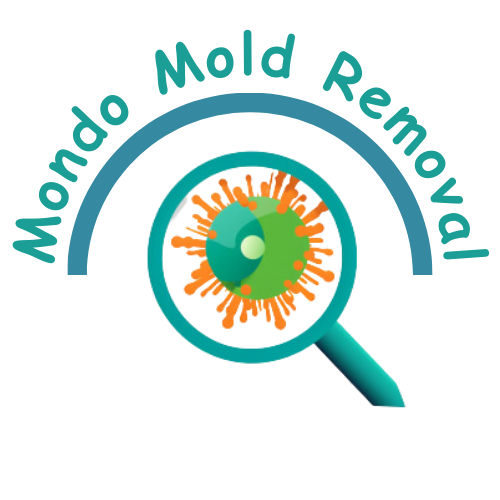In this informative article, you will gain a deeper understanding of the vital role that blood testing plays in detecting and addressing mold-related issues. Mold can have significant health implications, and this non-invasive procedure can provide crucial insights into its presence within your body. By exploring the significance of blood testing for mold, you will discover how it can help you identify potential health risks, ensure early intervention, and ultimately create a safer environment for you and your loved ones.

What is mold?
Definition of mold
Mold is a type of fungus that grows in multicellular filaments called hyphae. It is usually found in damp and humid environments where it thrives on organic materials such as wood, paper, and fabric. Mold reproduces through the release of spores, which can become airborne and spread to different areas, leading to mold contamination in various spaces.
Common types of mold
There are numerous types of mold, but some of the most commonly found ones include:
- Stachybotrys chartarum (also known as black mold): This type of mold is known for its dark greenish-black color and is often associated with water damage and high moisture levels.
- Aspergillus: Found both indoors and outdoors, this mold species can cause allergic reactions in some individuals and may produce mycotoxins under certain conditions.
- Penicillium: Often found in water-damaged buildings, penicillium can contribute to respiratory symptoms and allergic reactions in sensitive individuals.
- Cladosporium: Commonly found in both indoor and outdoor environments, cladosporium can cause respiratory allergies and asthma-like symptoms.
- Alternaria: Often found in damp areas, such as bathrooms and kitchens, alternaria can trigger asthma attacks, eczema, and hay fever-like symptoms in susceptible individuals.
Health risks associated with mold exposure
Exposure to mold can pose various health risks, particularly for individuals with allergies, respiratory conditions, or weakened immune systems. Some common health effects associated with mold exposure include:
- Allergic reactions: Many people are allergic to mold, and exposure can cause symptoms such as sneezing, coughing, itchy eyes, and a runny nose.
- Asthma exacerbation: Individuals with asthma may experience worsened symptoms, including wheezing, shortness of breath, and chest tightness, when exposed to mold.
- Respiratory infections: Prolonged exposure to certain molds can increase the risk of developing respiratory infections, particularly in individuals with compromised immune systems.
- Sinusitis: Mold exposure can lead to sinus inflammation, causing symptoms such as congestion, facial pain, and headaches.
- Skin irritation: Direct contact with mold or mold-infested materials can cause skin irritation, rashes, and itching.
Understanding blood testing
What is blood testing?
Blood testing involves analyzing a blood sample in a laboratory to detect the presence of specific substances or markers. It is commonly used in healthcare to diagnose various conditions, monitor treatment effectiveness, and assess overall health.
Why is blood testing used for mold detection?
Blood testing for mold is used to determine if an individual has been exposed to mold and if their immune system has responded by producing antibodies against mold-specific antigens. The presence of these antibodies in the blood can indicate recent or ongoing mold exposure.
How is blood testing for mold performed?
To perform blood testing for mold, a healthcare professional will draw a blood sample from a vein, typically from the arm. The blood sample is then sent to a laboratory for analysis. The laboratory will test the blood for mold-specific antibodies, such as IgE or IgG antibodies, which are produced by the immune system in response to mold exposure.
Benefits of blood testing for mold
Accurate detection of mold exposure
Blood testing provides a reliable method for detecting mold exposure, as it measures the presence of mold-specific antibodies in the blood. This allows for a more accurate assessment of whether an individual has been exposed to mold and the level of their immune response.
Identification of specific mold species
Blood testing can also help identify the specific type of mold to which an individual has been exposed. This information can be valuable for understanding the potential health effects associated with that particular mold species and guiding appropriate remediation measures.
Evaluation of immune response to mold
By measuring the levels of mold-specific antibodies in the blood, blood testing allows for the evaluation of an individual’s immune response to mold exposure. This information can be helpful in determining the severity of the immune reaction and guiding further medical interventions or treatment strategies.
When should blood testing for mold be considered?
Symptoms of mold exposure
If you experience symptoms such as persistent coughing, wheezing, sneezing, nasal congestion, or unexplained allergic reactions, blood testing for mold exposure may be considered. Additionally, symptoms like skin rashes, eye irritation, or recurring respiratory infections without an apparent cause could also indicate the need for blood testing.
Undiagnosed respiratory issues
For individuals with undiagnosed respiratory issues, such as asthma or chronic bronchitis, blood testing for mold can help determine if mold exposure is contributing to their symptoms. It is important to rule out or confirm mold exposure as a potential trigger for respiratory issues to provide appropriate treatment.
Suspected mold contamination in living or working environments
If you suspect mold contamination in your living or working environment due to visible mold growth, musty odors, or water damage, blood testing can help confirm whether mold exposure has occurred. This confirmation can aid in identifying the source of the mold and implementing effective remediation strategies.

What to expect during a blood test for mold
Preparing for the blood test
Before a blood test for mold, it is recommended to follow any instructions provided by the healthcare professional or testing facility. This may include fasting for a certain period or avoiding certain medications or substances that can affect the test results.
The testing procedure
During the blood testing procedure, a healthcare professional will clean the area where they will draw blood, typically the inside of your elbow. They will then use a needle to withdraw a small amount of blood, which is collected in a vial or test tube. The process is usually quick and relatively painless. After the blood sample is collected, it will be sent to a laboratory for analysis.
Interpreting the results
Once the blood sample is analyzed, the laboratory will provide a report detailing the presence and levels of mold-specific antibodies in the blood. The results will indicate whether mold exposure has occurred and the immune response level. These results should be interpreted by a qualified healthcare provider who can determine the significance of the findings and provide appropriate guidance and treatment recommendations.
Cost and availability of blood testing for mold
Insurance coverage
The cost of blood testing for mold can vary depending on factors such as the specific tests performed, the laboratory used, and whether or not insurance coverage is available. Some health insurance plans may cover the cost of blood testing when it is deemed medically necessary, while others may require out-of-pocket payment.
Affordability and pricing
Without insurance coverage, the cost of blood testing for mold can range from tens to hundreds of dollars, depending on the complexity of the test panel and the laboratory’s pricing structure. It is advisable to check with the testing facility or laboratory beforehand to understand the costs involved and explore any available discounts or payment options.
Availability of testing facilities
Blood testing for mold is typically available through healthcare providers, clinics, and specialized laboratories. It is essential to consult with a healthcare professional or contact local testing facilities to inquire about their availability and schedule an appointment if necessary.
Limitations and considerations of blood testing for mold
False negatives and false positives
Blood testing for mold, like other diagnostic tests, is not without limitations. There is a possibility of false-negative results, where mold exposure may have occurred, but the antibodies are not detected in the blood sample. On the other hand, false-positive results can occur if the antibodies detected are not specifically related to mold exposure. Interpretation of the test results should be done by a qualified healthcare professional to account for these possibilities.
Limited testing for non-allergic individuals
Blood testing for mold primarily focuses on measuring mold-specific antibodies associated with allergies and immune response. As a result, individuals who do not have a specific allergic reaction or immune response to mold may not show significant results in blood testing. Other diagnostic methods may be necessary to assess mold exposure in non-allergic individuals.
Supplementary testing for conclusive diagnosis
Blood testing for mold provides valuable information about exposure and immune response, but it is not sufficient for a conclusive diagnosis of mold-related health issues. If mold exposure is confirmed through blood testing, additional diagnostic methods, such as imaging or allergy testing, may be required to assess the extent of health effects and determine appropriate treatment options.
Combining blood testing with other mold detection methods
Using blood testing alongside air sampling
When assessing mold contamination and its potential health effects, blood testing can be used in conjunction with other mold detection methods, such as air sampling. Air sampling helps measure the concentration of mold spores or fragments in the air, providing an overall assessment of mold levels in a specific environment. When combined with blood testing results, a more comprehensive picture can be obtained regarding mold exposure and its impact on health.
Utilizing visual inspections and mold testing kits
Visual inspections and mold testing kits can help identify visible signs of mold growth and collect surface or bulk samples for laboratory analysis. These methods can provide initial indications of potential mold contamination, which can then be further assessed through blood testing and other diagnostic approaches. Consulting professionals experienced in mold assessment and remediation is often recommended for accurate evaluation.
Seeking professional assistance for comprehensive assessment
To ensure a thorough and accurate assessment of mold exposure, it is advisable to seek professional assistance from mold inspectors, industrial hygienists, or healthcare providers specializing in mold-related health issues. These professionals can provide guidance on appropriate testing methods, interpretation of results, and recommend suitable remediation and prevention strategies based on individual circumstances.
Addressing mold exposure and prevention
Removing mold sources
To address mold exposure, it is crucial to identify and remove the source of mold growth. This may involve fixing any plumbing leaks, improving ventilation in damp areas such as bathrooms and kitchens, and promptly drying and repairing water-damaged materials.
Improving ventilation and reducing moisture
Maintaining proper ventilation in indoor spaces can help reduce moisture levels and discourage mold growth. Opening windows, using exhaust fans, and utilizing dehumidifiers can aid in controlling humidity and promoting air circulation, creating an environment less conducive to mold growth.
Enhancing overall indoor air quality
Taking steps to improve overall indoor air quality can also minimize the risk of mold exposure. This includes regular cleaning, reducing clutter, avoiding smoking indoors, and using high-quality air filters or purifiers to remove airborne particles, including mold spores.
Seeking medical advice and treatment
Consulting a healthcare professional
If you suspect mold exposure or experience symptoms that may be related to mold, it is essential to seek medical advice from a qualified healthcare professional. They can evaluate your symptoms, review test results, and provide appropriate guidance, treatment, and referrals, if necessary.
Treating mold-related health issues
Treatment for mold-related health issues depends on the severity of symptoms and underlying conditions. It may include medications to manage allergies, asthma, or respiratory infections, as well as addressing any underlying immune system deficiencies. In some cases, referral to specialists, such as allergists or pulmonologists, may be necessary for advanced evaluation and treatment.
Long-term effects and mitigation
If you have experienced mold-related health issues, it is important to address the underlying causes of mold growth and take preventative measures to avoid future exposure. Regular monitoring, maintenance, and prompt remediation of any potential sources of moisture or mold can help mitigate long-term health effects and create a safe and healthy indoor environment.
In conclusion, blood testing for mold provides an accurate and informative method for detecting exposure to mold and evaluating an individual’s immune response. It can help identify specific mold species and guide appropriate remediation efforts. Blood testing should be considered when experiencing symptoms of mold exposure, undiagnosed respiratory issues, or suspecting mold contamination in living or working environments. While blood testing has limitations, such as the possibility of false negatives or false positives, it can be combined with other mold detection methods for a comprehensive assessment. Addressing mold exposure and prevention involves removing mold sources, improving ventilation, and enhancing overall indoor air quality. Seeking medical advice and treatment from healthcare professionals is crucial for managing mold-related health issues and mitigating long-term effects.






